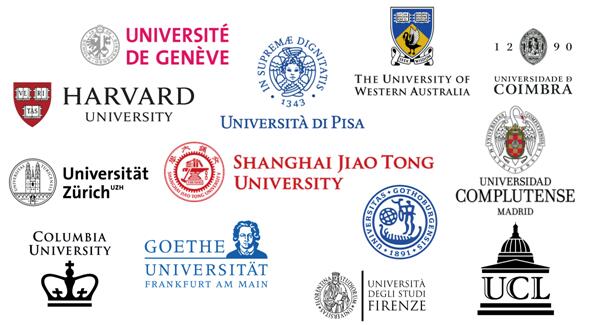Skin and soft tissue infection leading to shock, 63 year old uncle almost died in emergency | skin | shock
This disease originates from a small and often overlooked condition, but is most common in the emergency rescue room, with a mortality rate even higher than that of common tumors: 63 year old Uncle He almost died from a skin soft tissue abscess with a diameter of 15 centimeters on his back. When he was sent to the hospital for emergency treatment at 120, his consciousness was already blurred. With the help of the emergency expert team from Xinhua Hospital affiliated with Shanghai Jiao Tong University School of Medicine, Uncle He managed to escape the disaster. Chen Liang, the deputy chief physician of the emergency medical department, reminded elderly patients to pay attention to skin and soft tissue infections and seek timely medical attention, beware of minor injuries that may lead to major accidents.
Uncle "Sugar Friend" suffers from septic shock
Not long ago, Uncle He was sent to the emergency department of Xinhua Hospital by 120 ambulance. He has a history of diabetes. He has been weak for several days and fell down many times. After a detailed examination by the medical staff in the emergency room of Xinhua Hospital, it was found that Uncle He's blood pressure was only 75/50mmHg, and there was a soft tissue swelling on his left back with a diameter of about 15 centimeters. The pain was severe and there was a noticeable wave sensation. The inspection report also shows that Uncle He has severe inflammatory reactions in his body, which have affected the functions of other organs, accompanied by heart failure, respiratory failure, acute kidney function damage, abnormal coagulation function, anemia, etc. The severity index is very high, and the condition is very critical.
This is sepsis! Chen Liang introduced that Uncle He suffered from organ dysfunction caused by host reaction disorder caused by infection, with a high incidence rate and a case fatality rate of about 30% to 40%. Once septic shock occurs, the mortality rate can reach up to 50%. The emergency doctors at Xinhua Hospital treated Uncle He with fluid resuscitation, vasoactive drugs, antibiotics, and other treatments, but still could not effectively correct septic shock.
The condition is critical. After full communication with the family, emergency experts from Xinhua Hospital have decided to urgently cut open and drain the left back infection site of Uncle He, try to remove necrotic tissue and the source of infection as much as possible, and then perform continuous negative pressure drainage on the wound while continuing anti infection treatment. On the evening of the incision treatment, Uncle He's blood pressure gradually stabilized and returned to normal, and he switched to non-invasive ventilator assisted ventilation. After multiple changes in dressing and drainage, Uncle He was able to overcome the crisis, improve his heart failure and respiratory failure, restore normal kidney function, and significantly improve his infection indicators.
Long term bedridden grandma with soft tissue necrosis
Coincidentally, recently, Mei Aipo, who is almost 90 years old, was also sent to the emergency room of the hospital by ambulance 120 due to sepsis shock caused by skin and soft tissue infection.
Mei has a history of diabetes for decades. She has been in bed for a long time due to fracture, which has led to skin and soft tissue necrosis and infection. Upon admission, Grandma was in a drowsy state, with multiple pressure ulcers on her right buttocks accompanied by a large amount of pus exudation. Grandma Mei also experienced severe infections such as lung infection, moderate anemia, hyponatremia, hypoalbuminemia, and hypokalemia. After stabilizing the vital signs of Mrs. Mei, the doctors implemented step-by-step treatment for sepsis caused by skin and soft tissue infections, including bedside surgical debridement, negative pressure suction, and local medication flushing. The use of antibiotics was adjusted based on the bacterial culture results of the wound secretions, and gradually closed the wound according to infection control and granulation conditions.
After a period of treatment, the wounds on Mei's skin tended to heal and her overall condition improved significantly.
Be careful of getting infected and causing big trouble
Sepsis is one of the common diseases that emergency doctors receive and treat. If not treated in a timely manner, it can easily lead to septic shock and even death. Tang Lujia, the attending physician of the emergency medical department, said that the current situation of incidence rate and mortality of sepsis was serious, and the mortality even exceeded the mortality of some common tumors.
Experts revealed that the common pathogens leading to sepsis include bacteria, viruses, fungi, chlamydia, mycoplasma, etc. The common infection sites include lung infection, reproductive and urinary tract infection, abdominal cavity infection, central nervous system infection, while basic diseases such as diabetes, low immune function, high blood pressure, and old age are high risk factors of sepsis, which need special attention. In addition to these common infection sites, some seemingly rare infections, such as skin and soft tissue infections, should not be ignored. Experts remind elderly patients with underlying diseases that if they experience skin and soft tissue infections, they should also take it seriously, seek medical attention in a timely manner, and be careful not to get infected and cause big trouble.




